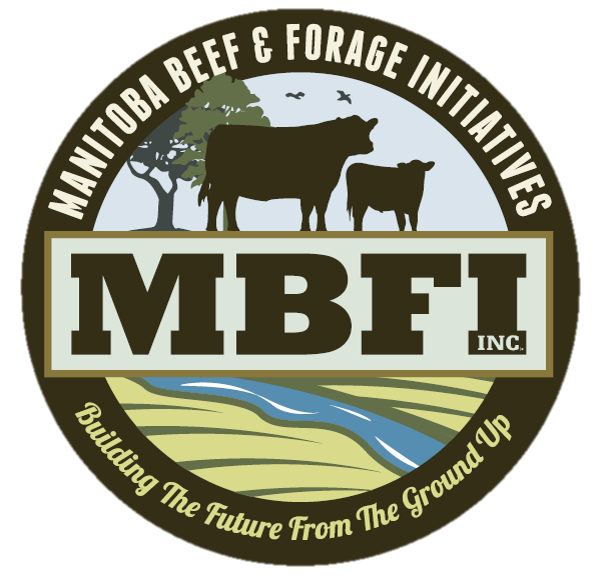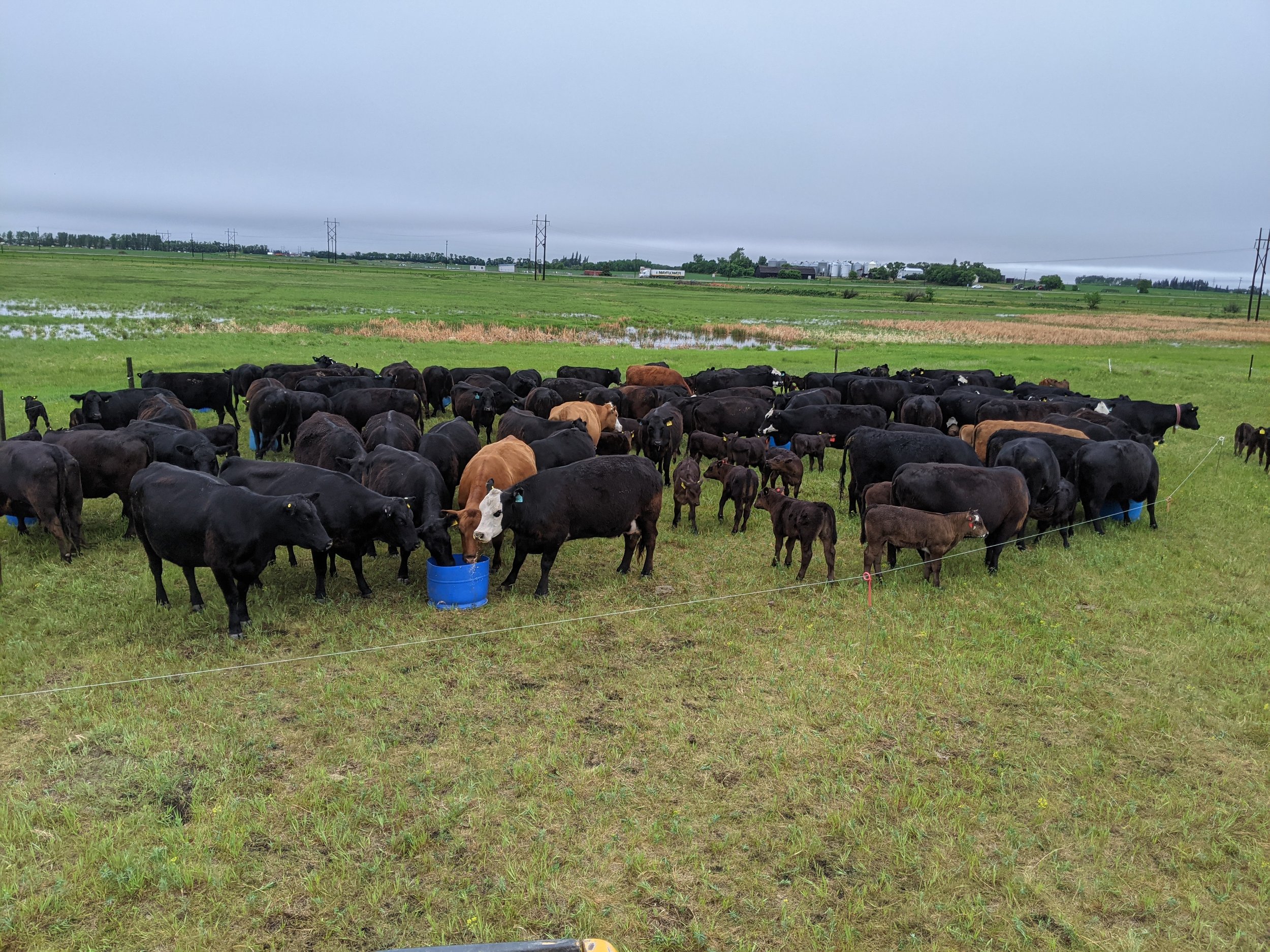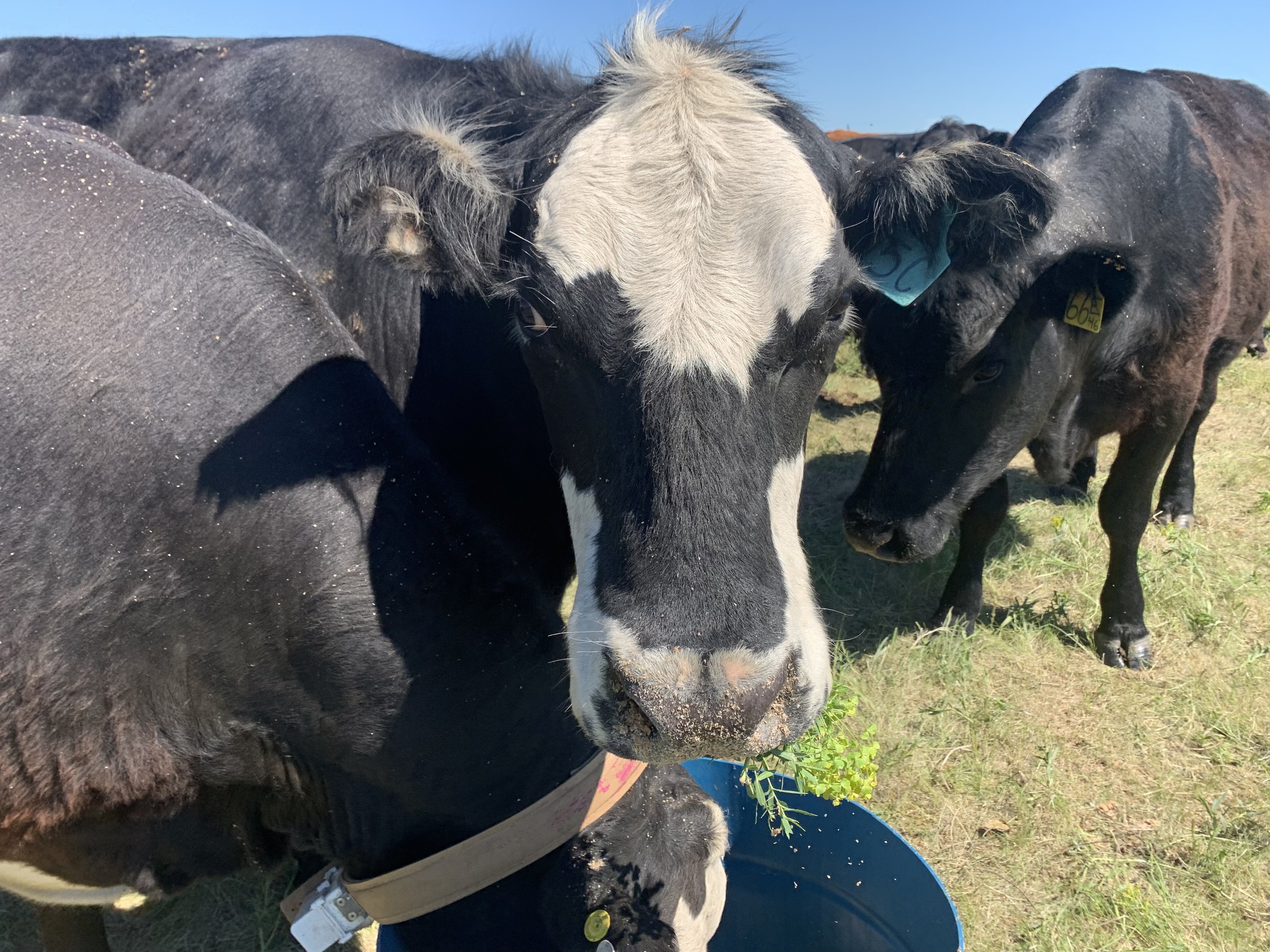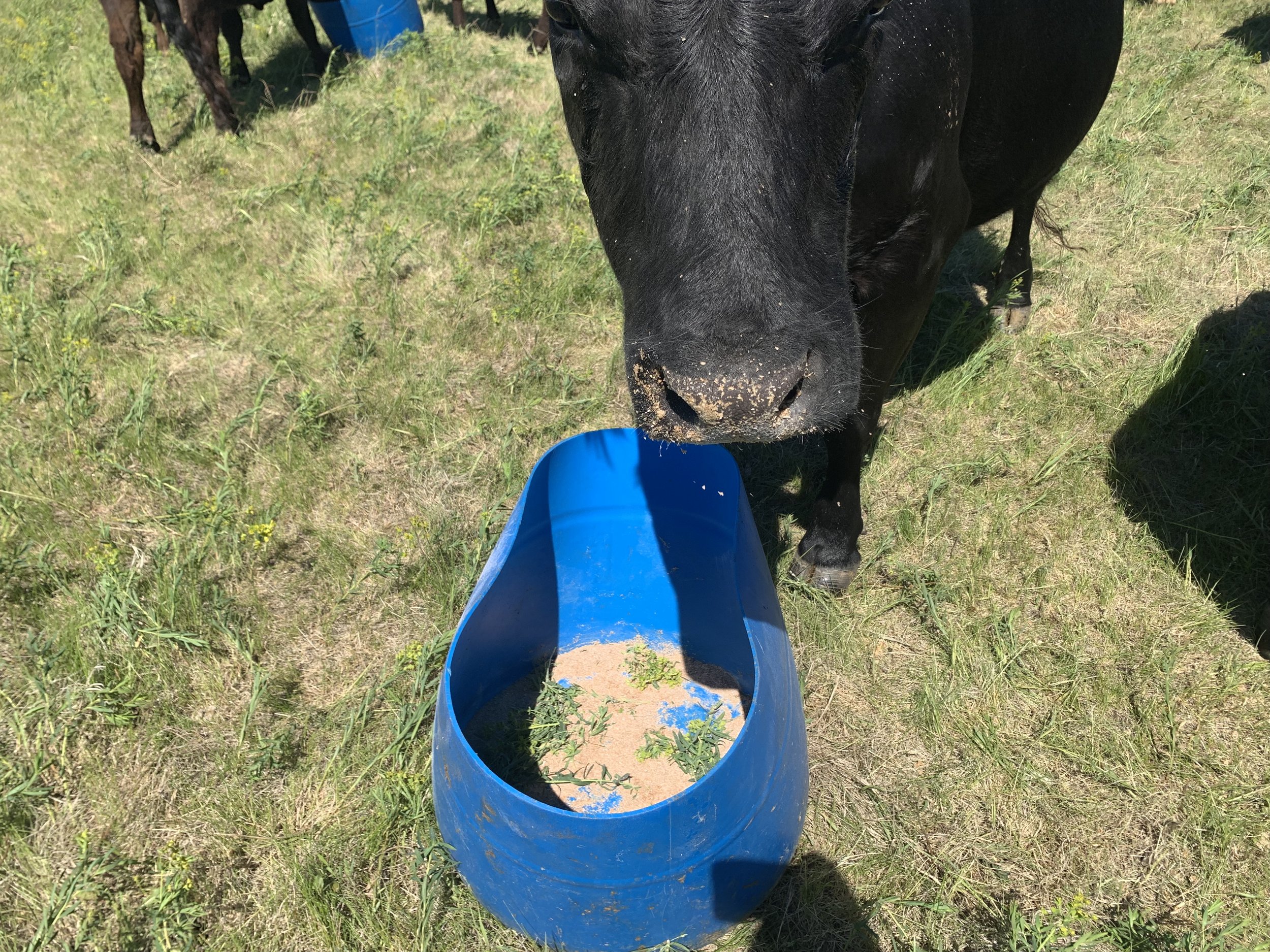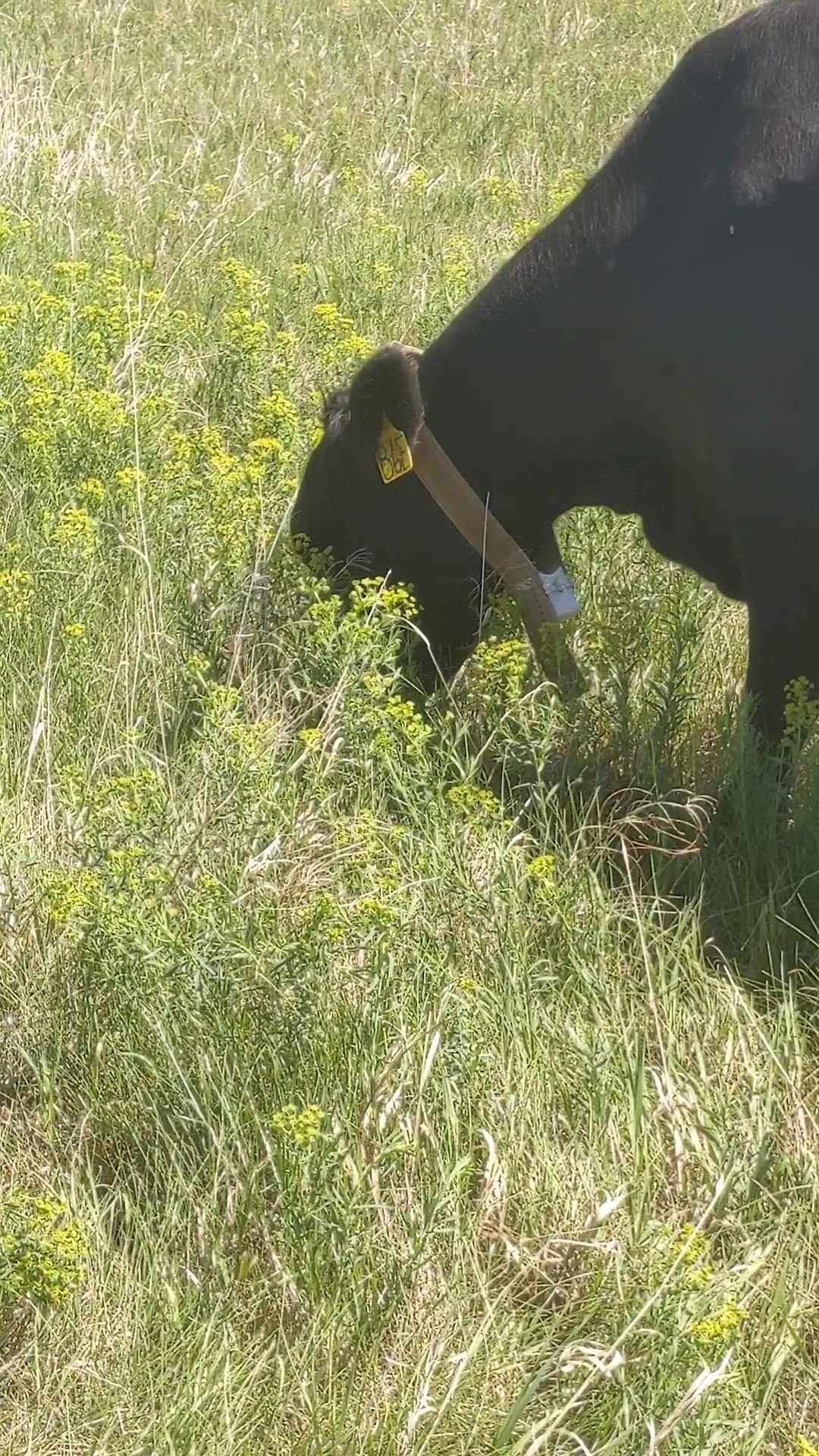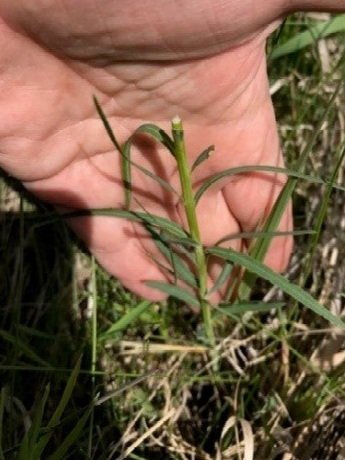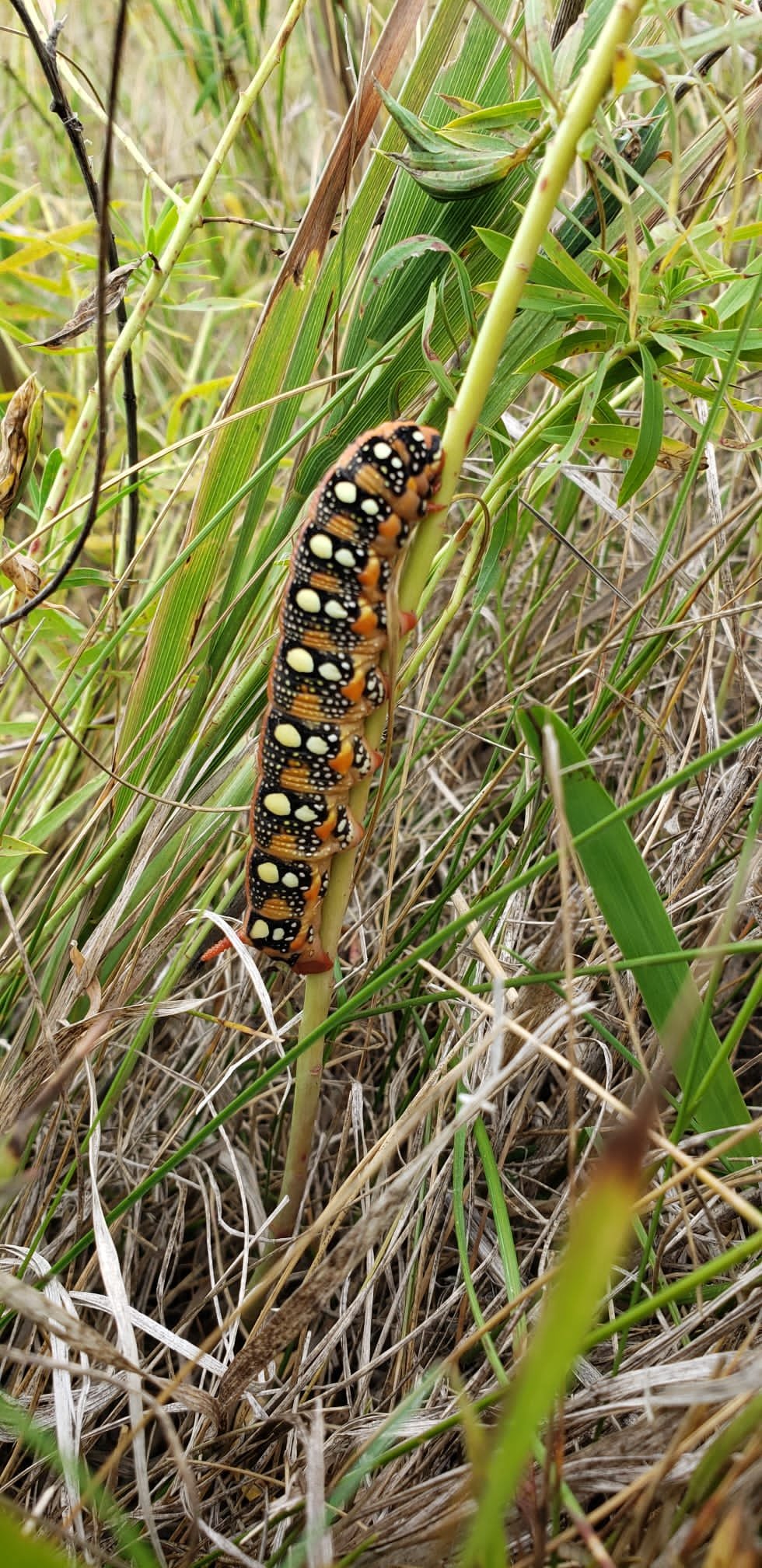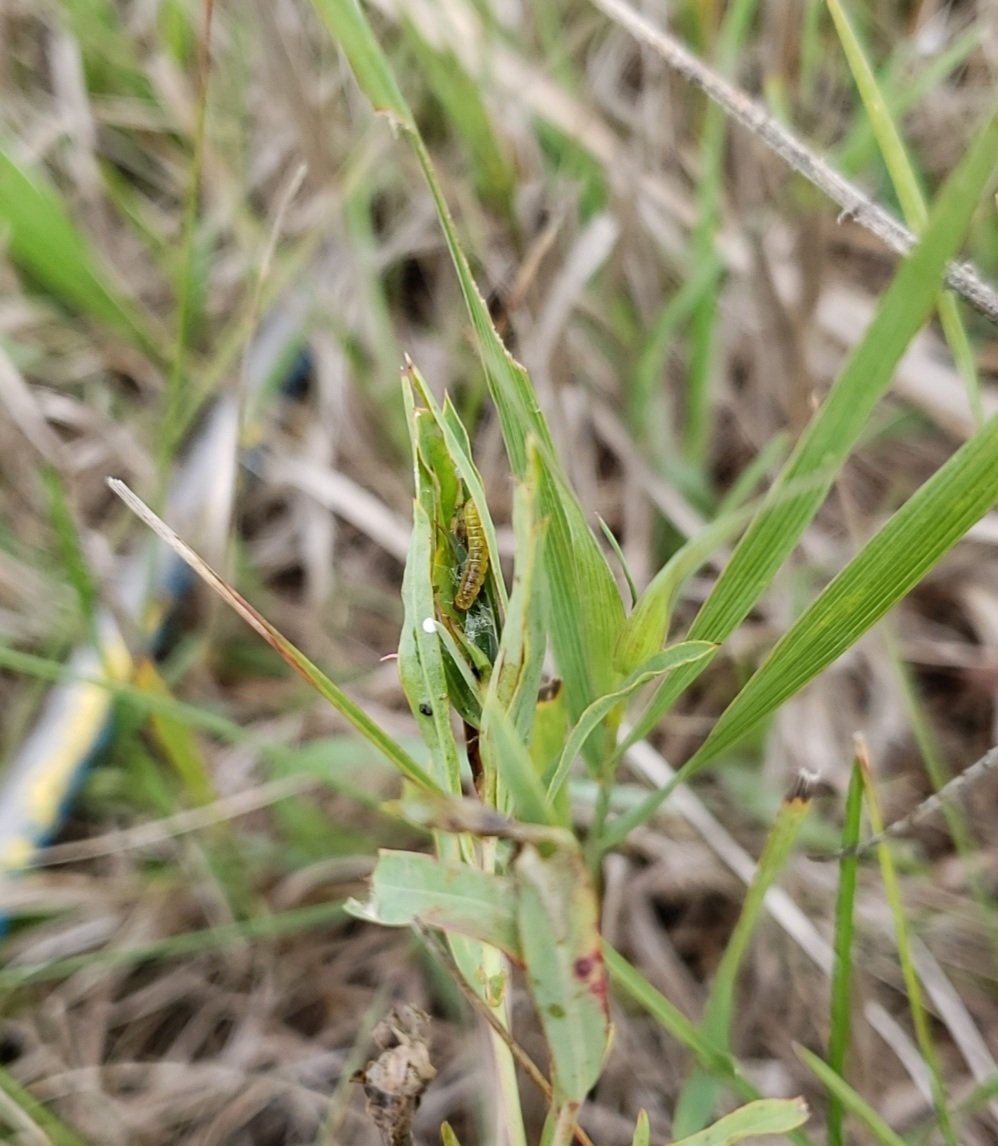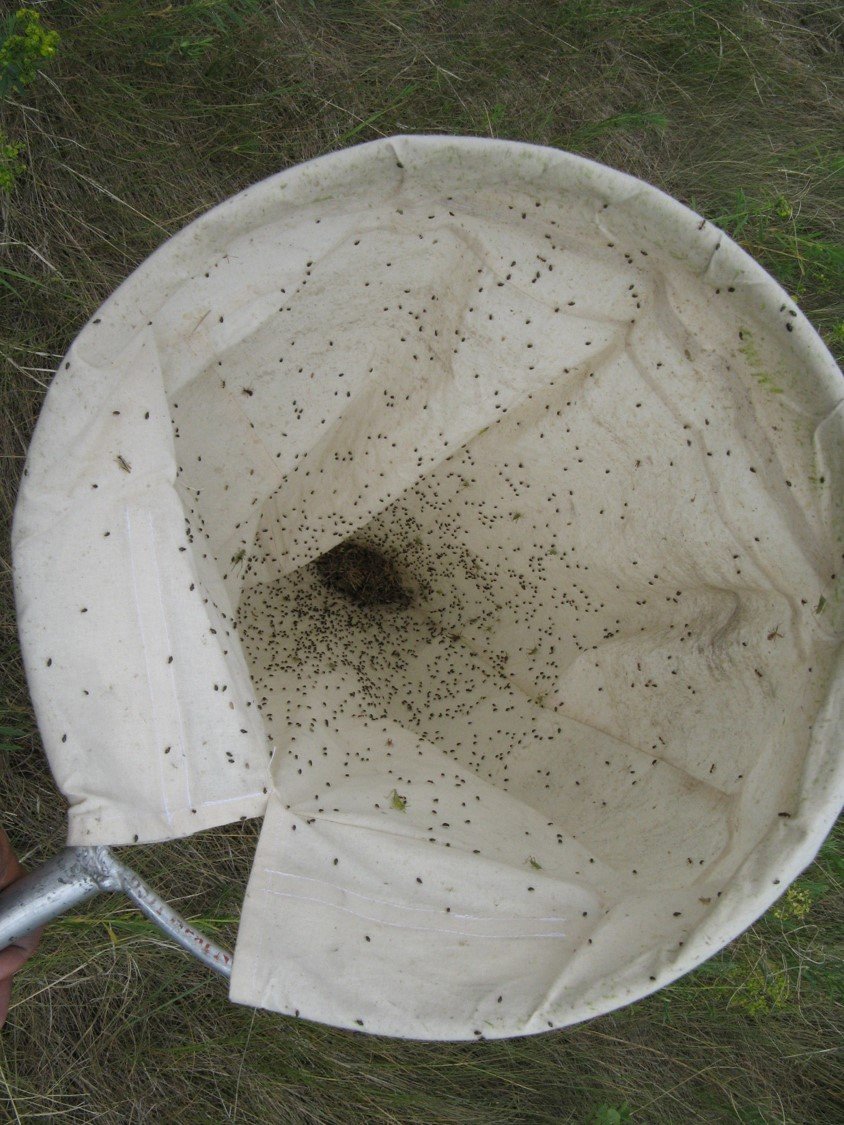Back to Research & Demonstration
Understanding and manipulating leafy spurge populations with cattle grazing and biological control
Project Details
Project Lead: Jane Thornton, retired (Manitoba Agriculture) & Mae Elsinger (Agriculture and Agri-Food Canada)
Collaborators: Bev Dunlop (Agriculture and Agri-Food Canada)
Years: 2015-2021
Project Status: Complete
Funding & In-Kind Support: Canadian Agricultural Partnership, Growing Forward II, Agriculture & Agri-Food Canada
Location: First Street Pasture
Scope: Case Study
Keywords: Weed Management
Approach
Cattle were taught to increase the amount of leafy spurge in their diet to increase cattle tolerance of foraging among spurge plants with the potential of impacting the spurge itself. Damage to spurge from cattle and other biocontrols including spurge leaf tier moths, spurge gall midges, spurge flea beetles, and leafy spurge hawkmoths was monitored.
Leafy spurge abundance was surveyed throughout the pasture to understand the extent of the infestation.
Effect of grazing versus not grazing was compared in relation to abundance and health of leafy spurge and leafy spurge flea beetle populations.
Key Findings
Teaching Cattle to Eat Leafy Spurge:
Trained cattle are more likely to graze within leafy spurge patches
Cattle grazing and trampling impacted a relatively small number of stems compared to overall spurge population
Leafy Spurge Flea Beetles:
The leafy spurge flea beetles and their larvae appear to be playing an essential role in reducing leafy spurge
The grazed vs. ungrazed study on abundance and health of spurge flea beetles and spurge was poorly designed and no conclusions were available.
Other Biological Controls:
Natural enemies, such as spurge leaf tier moths (Lobesia euphorbiana) and spurge gall midges (Spurgia esulae) have been found to impact many of the spurge stems in the pastures.
Accumulated percentages of leafy spurge stems visibly damaged by grazing, trampling, spurge leaf tier moth nests, spurge gall midge nests, and unknown damages.
Distribution of 1229 individual samples of leafy spurge stem density counts, with critical thresholds or zones marked, to illustrate level of control of spurge at this pasture by natural enemies, primarily spurge flea beetles.
Full Reports:
2021 Final Reports:
2020 Interim Report: Cattle grazing & biological control agents
2019 Interim Report: Cattle grazing & biological control agents
2017 Final Reports:
2016 Interim Reports:
2015 Interim Report: An affordable management option for fighting leafy spurge – using biological control agents
Industry Resources:
Educated Cows Eat Weeds! - Livestock for Landscapes
Integrated Management of Leafy Spurge - North Dakota State University
Leafy Spurge Biocontrol - Brandon University
